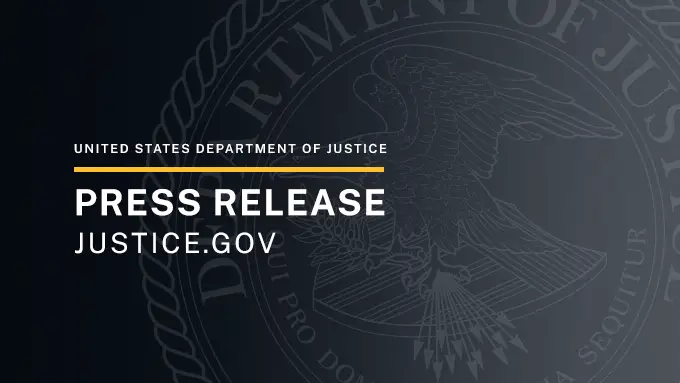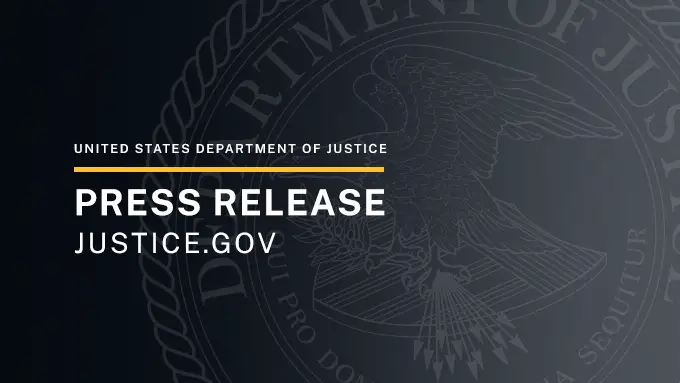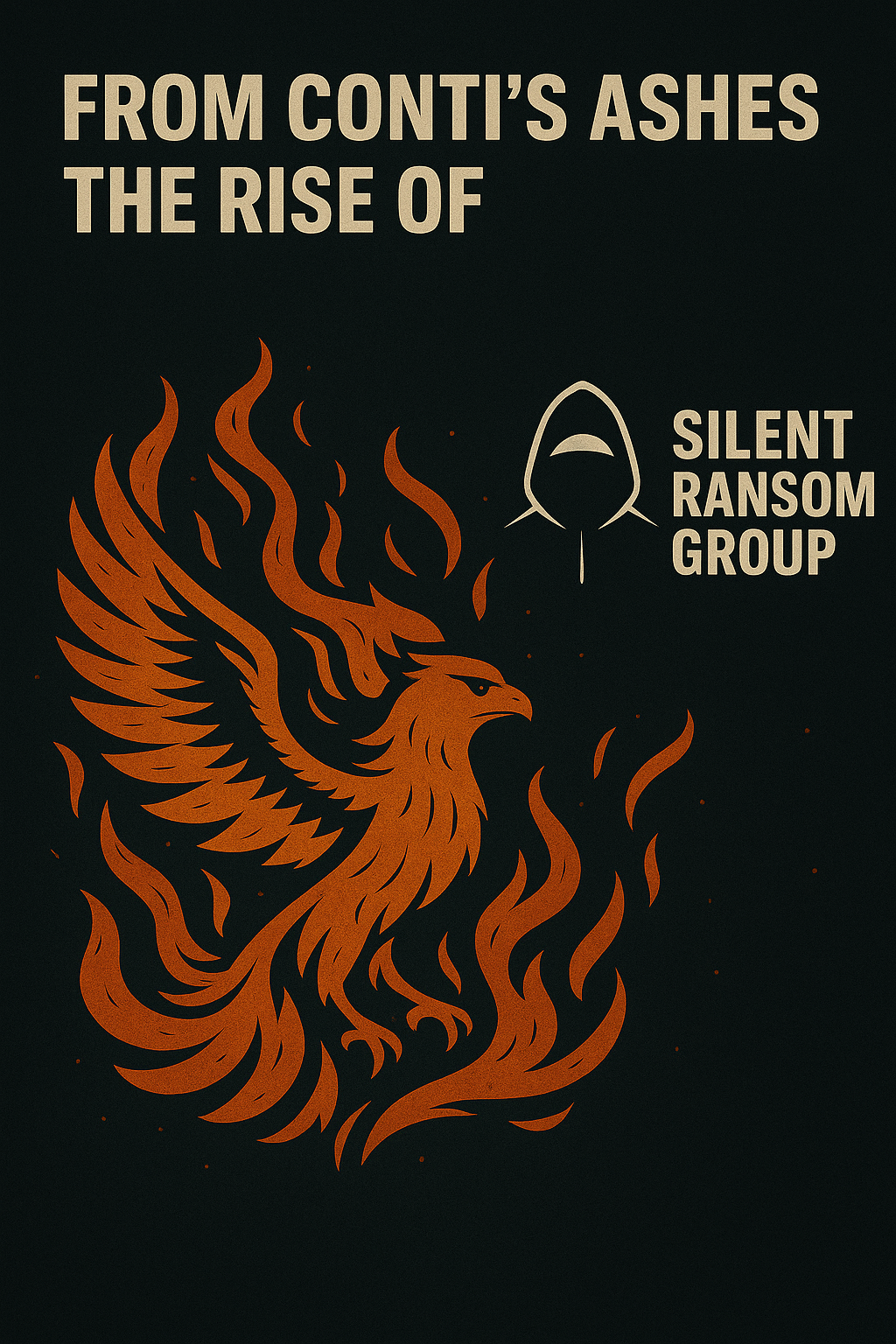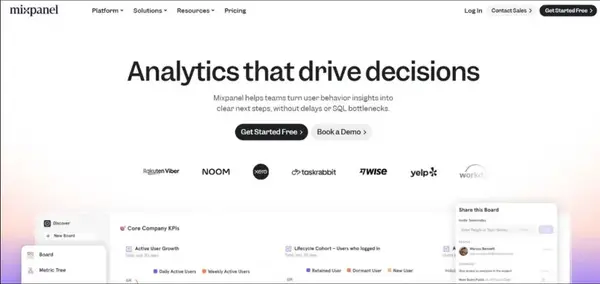Ukrainian National Extradited from Ireland: Inside the Conti Ransomware Takedown

The $150 Million Cybercrime Operation That Spanned 47 States
In a significant victory for international cybercrime prosecution, Ukrainian national Oleksii Oleksiyovych Lytvynenko, 43, has been extradited from Ireland to face charges related to his alleged role in the notorious Conti ransomware operation. The case represents a watershed moment in cross-border law enforcement cooperation and underscores the global reach of U.S. authorities in pursuing cybercriminals.

Executive Summary
Key Takeaways:
- Lytvynenko allegedly operated as a key player in Conti ransomware between 2020-2022
- The operation extorted at least $150 million from over 1,000 victims worldwide
- He was arrested in Ireland in July 2023 after fleeing Ukraine during the Russian invasion
- Faces up to 25 years in prison if convicted on computer fraud and wire fraud conspiracy charges
- The extradition demonstrates unprecedented international cooperation between U.S., Irish, and European law enforcement
The Defendant: From War Refugee to Cybercrime Suspect
Oleksii Oleksiyovych Lytvynenko's journey from Ukrainian lawyer to ransomware suspect reads like a cybercrime thriller. After fleeing Ukraine with his wife and child following Russia's 2022 invasion, Lytvynenko was granted temporary protection in Ireland—a humanitarian gesture that would eventually facilitate one of the most significant ransomware prosecutions in recent history.
Settling in Cork, Ireland, Lytvynenko attempted to rebuild his life in the coastal city. However, his past allegedly caught up with him on a summer day in July 2023 when An Garda Síochána, Ireland's national police force, arrested him at the request of U.S. authorities. For the next 15 months, he fought extradition from an Irish jail cell, arguing that his removal to the United States would violate his right to a fair trial and prevent him from collecting evidence and witnesses from war-torn Ukraine.
Those arguments ultimately failed. In October 2024, after exhausting his appeals in Irish courts, Lytvynenko was extradited to the United States, where he made his initial appearance in the Middle District of Tennessee court. He pleaded not guilty to all charges and remains in federal custody, with prosecutors arguing he poses both a substantial flight risk and a danger to the community.

Understanding Conti: The Ransomware Operation That Changed the Game
To understand the significance of Lytvynenko's alleged crimes, one must first understand Conti itself—arguably one of the most sophisticated and devastating ransomware operations in history.
The Rise of a Cybercrime Empire
Conti emerged in late 2019, evolving from or alongside the infamous Ryuk ransomware. Operating under the pseudonym "Wizard Spider," the group was believed to be based in Saint Petersburg, Russia, and quickly distinguished itself through several innovative approaches:
Technical Sophistication:
- Utilized a custom AES-256 implementation with up to 32 individual logical threads, making encryption significantly faster than competing ransomware
- Deployed through multiple vectors including TrickBot and BazarLoader Trojans
- Capable of completing full network encryption in minutes, leaving defenders little time to react

Business Model Innovation: Unlike traditional Ransomware-as-a-Service (RaaS) models that paid affiliates a percentage of ransoms, Conti allegedly operated more like a traditional corporation, paying members fixed salaries ranging from $1,500 to $2,000 per month for programmers. Some negotiators reportedly earned up to 5% of ransom payments as commission.
Double Extortion Tactics: Conti pioneered aggressive double extortion strategies, not only encrypting victims' data but also exfiltrating sensitive information and threatening public disclosure. In cases where victims refused to pay, the group allegedly sold network access to other threat actors, creating multiple revenue streams from a single compromise.
By the Numbers: Conti's Devastating Impact
The scale of Conti's operations is staggering:
- 1,000+ victims worldwide
- $150 million+ in confirmed ransom payments as of January 2022
- $180 million estimated annual revenue at peak operations (2021)
- 47 U.S. states plus D.C. and Puerto Rico affected
- 31+ countries targeted globally
- #1 threat to critical infrastructure in 2021, according to the FBI
The operation didn't discriminate in target selection. Victims included:
- Healthcare systems and hospitals during the COVID-19 pandemic
- Educational institutions and schools
- Emergency services including a sheriff's department and EMS
- Oil and gas infrastructure
- Manufacturing and supply chain companies
- Government entities (most notably Costa Rica's government in 2022)
The Charges: What Prosecutors Allege
According to the 2023 indictment unsealed in the Middle District of Tennessee, Lytvynenko allegedly played a critical operational role in Conti's conspiracy from approximately 2020 through June 2022.

Specific Allegations
Data Management: Court documents allege that Lytvynenko controlled data stolen from numerous Conti victims, effectively serving as a data custodian for the operation's extortion activities.
Ransom Operations: Prosecutors claim he was directly involved in crafting and deploying ransom notes on compromised systems, making him a key player in the extortion phase of attacks.
Tennessee Victims: The indictment specifically references three victims in the Middle District of Tennessee:
- Two organizations were allegedly extorted of more than $500,000 in cryptocurrency
- A third victim who refused to pay had their stolen data published online
Continued Criminal Activity: Perhaps most damning, court filings allege Lytvynenko continued engaging in cybercrime activities up until "days before his arrest" in Ireland in July 2023—more than a year after Conti's official disbandment.
Criminal Charges and Potential Sentences
Lytvynenko faces two federal charges:
- Computer Fraud Conspiracy (18 U.S.C. § 1030)
- Maximum penalty: 5 years in prison
- Wire Fraud Conspiracy (18 U.S.C. § 1343)
- Maximum penalty: 20 years in prison
If convicted on both counts, he faces up to 25 years in federal prison, along with substantial fines and restitution to victims.
The Investigation: Multi-Agency Coordination
The case against Lytvynenko represents a masterclass in international law enforcement cooperation, involving multiple agencies across several continents.
U.S. Law Enforcement Participants
Federal Bureau of Investigation:
- Nashville Field Office (lead office)
- San Diego Field Office
- El Paso Field Office
- FBI Cyber Division leadership
U.S. Secret Service: Contributing investigative resources and expertise in financial crimes
Department of Justice:
- Computer Crime and Intellectual Property Section (CCIPS)
- Office of International Affairs
- U.S. Attorney's Office for the Middle District of Tennessee
International Partners
Ireland:
- An Garda Síochána (national police) conducted the arrest
- Irish courts handled detention and extradition proceedings
- Irish Department of Justice coordinated with U.S. counterparts
United Kingdom: Provided intelligence and coordination through the National Crime Agency, particularly regarding the 2023 indictments of four other Conti conspirators
Ukraine: Despite the ongoing war, Ukrainian authorities contributed intelligence and arrested other Conti-connected individuals, including a ransomware cryptor developer in June 2024 as part of Operation Endgame
The Broader Conti Takedown
Lytvynenko's extradition is just one piece of a larger international effort to dismantle Conti's network and hold its operators accountable.
Previous Actions Against Conti
September 2023 Indictments: The U.S. and UK unsealed indictments against four other Conti conspirators, all Russian nationals who were also connected to the TrickBot malware operation:
- Maksim Khaliullin (aka Maxfax, Maxhax, and Kagas)
- Three additional co-conspirators
These individuals were also sanctioned by both the U.S. Treasury and UK financial authorities.
February 2023 Sanctions: Seven TrickBot/Conti members were designated for sanctions following the massive "ContiLeaks" and "TrickLeaks" data breaches that exposed the gang's internal operations.
State Department Rewards: In May 2022, the U.S. government announced rewards totaling up to $15 million:
- $10 million for information leading to the identification or location of Conti's leaders
- $5 million for information leading to the arrest of anyone conspiring with the group
The ContiLeaks: A Turning Point
In February 2022, as Russia invaded Ukraine, Conti's leadership made a fateful decision: they publicly declared support for Russia and threatened "retaliatory measures" against anyone launching cyberattacks on Russian infrastructure.
The response was immediate and devastating. A Ukrainian security researcher or disgruntled affiliate (accounts vary) using the handle "@ContiLeaks" began releasing over 100,000 internal files, including:
- More than 60,000 Jabber chat messages dating from early 2020 to February 27, 2022
- Source code for various tools and malware
- Tactical playbooks and standard operating procedures
- Financial records and payment structures
- Identities and personal information of members
Dubbed the "Panama Papers of ransomware," these leaks provided unprecedented insight into the operation's structure, methods, and personnel. The exposure, combined with mounting sanctions concerns that made ransom payments potentially illegal, contributed to Conti's official shutdown in May 2022.
The Irish Connection: Legal Battles and Humanitarian Complications
Lytvynenko's case presented unique legal and humanitarian challenges that highlight the complexities of modern cybercrime prosecution.
The Refugee Paradox
When Lytvynenko fled Ukraine with his family in 2022, he was granted temporary protection under Ireland's humanitarian response to the Ukrainian refugee crisis. This status complicated his later arrest and extradition:
Humanitarian Concerns: Irish courts had to balance Ireland's commitments to protecting war refugees against its treaty obligations to extradite suspected criminals.
Fair Trial Arguments: Lytvynenko's defense argued that extradition would violate his rights because:
- He couldn't safely return to Ukraine to gather evidence
- Ukrainian witnesses couldn't easily travel to testify in U.S. courts
- The ongoing war made preparing an adequate defense impossible
Legal Precedent: The Irish courts ultimately determined that these concerns, while legitimate, did not outweigh the evidence of alleged criminal conduct and Ireland's extradition treaty obligations with the United States.
Extradition Timeline
- July 2023: Arrested by An Garda Síochána in Cork
- July-October 2023: Initial detention hearings and extradition order
- October 2023-September 2024: Appeals process through Irish courts
- October 2024: Final appeal denied; extradition executed
- October 31, 2024: Initial appearance in U.S. District Court, Middle District of Tennessee
The 15-month detention and legal process demonstrates the thorough due process requirements in international extradition cases, even for serious cybercrime allegations.
Impact on Victims: Real-World Consequences
While the technical and legal aspects of the Conti operation are fascinating, the human cost cannot be overlooked. Conti's attacks caused widespread disruption and harm:
Healthcare Sector Devastation
In 2021, Conti attacked more healthcare and critical infrastructure targets than any other ransomware variant—during the height of the COVID-19 pandemic. These attacks:
- Delayed medical procedures and treatments
- Forced emergency rooms to divert patients
- Compromised protected health information (PHI)
- Cost healthcare systems millions in remediation and downtime
Government Operations Paralyzed
The May 2022 attack on Costa Rica was particularly brazen. Conti:
- Compromised at least 27 government institutions
- Demanded a $20 million ransom
- Caused newly elected President Rodrigo Chaves to declare a national emergency
- Disrupted critical government services for weeks
Critical Infrastructure at Risk
Notable Conti attacks included:
- SEA-Invest: International terminal operator with 24 seaports across Europe and Africa
- Oiltanking Deutschland GmbH and Mabanaft Deutschland: Major oil storage companies that couldn't revert to manual operations
- Multiple U.S. Emergency Services: Including sheriff's departments and emergency medical services
Business Disruptions
Beyond ransom payments, victims faced:
- Extended operational downtime (weeks to months)
- Massive remediation costs (often exceeding ransom demands)
- Regulatory fines and legal expenses
- Reputational damage and lost business
- Cybersecurity insurance premium increases
Case Study: The Unreliable Operators
According to Palo Alto Networks' Unit 42, Conti distinguished itself from other ransomware groups by being notably unreliable as "business partners." In documented cases:
- Victims who paid ransoms received only partial decryption keys or no keys at all
- The group refused to provide promised data deletion certificates
- They denied agreed-upon services after receiving payment
This behavior undermined the perverse "honor among thieves" that usually incentivizes ransomware victims to pay.
Technical Tactics: How Conti Operated
Understanding Conti's technical methodology provides valuable insights for defenders and incident responders.
Initial Access Vectors
Conti operators gained entry through multiple methods:
Phishing Campaigns:
- Spear-phishing emails with malicious attachments
- Weaponized Microsoft Word/Excel documents with embedded macros
- Social engineering tactics targeting specific individuals
Trojan Distribution:
- TrickBot malware as primary delivery mechanism
- BazarLoader as alternative entry point
- Zloader for credential harvesting
Exploit-Based Entry:
- Vulnerable Remote Desktop Protocol (RDP) servers
- Unpatched CVE vulnerabilities in internet-facing systems
- Compromised VPN credentials from previous breaches
Post-Compromise Activities
Once inside a network, Conti operators followed a sophisticated playbook:
Phase 1: Reconnaissance (Hours 1-24)
- Network mapping and Active Directory enumeration
- Document exfiltration to identify the target organization
- Credential harvesting from browsers, memory, and files
- Identification of backup systems and security tools
Phase 2: Lateral Movement (Days 1-3)
- Privilege escalation to domain administrator level
- Deployment of remote access tools (RATs)
- Disabling of endpoint detection and response (EDR) tools
- Deletion of Volume Shadow Copies and backups
Phase 3: Data Exfiltration (Days 2-5)
- Bulk data transfer to attacker-controlled servers
- Typically using cloud storage services or custom protocols
- Focus on sensitive documents, financial records, and PII
Phase 4: Encryption & Extortion (Days 3-7)
- Rapid deployment of ransomware payloads
- Encryption using AES-256 + RSA-4096 hybrid algorithm
- Distribution of ransom notes via Registry modifications and file creation
- Shutdown of systems to maximize impact
Persistence Mechanisms
Conti employed multiple techniques to maintain network access:
Registry Modifications:
reg add HKCU\Software\Microsoft\Windows\CurrentVersion\Run /v <name> /t REG_SZ /d <malware_path>
Scheduled Tasks:
- Boot-time execution triggers
- Periodic reinfection mechanisms
- Backup persistence in case primary methods are detected
Service Installation:
- Malware registered as legitimate Windows services
- DLL injection into trusted processes
- Rootkit-level system hooks
Command & Control:
- Rocket.Chat for coordinated attacks
- Jabber/XMPP for internal communications
- pCloud and similar services for data staging
The Evolution Post-Conti: Where Did They Go?
Despite Conti's official shutdown in May 2022, the threat didn't disappear—it metastasized.
The Rebranding Strategy
Security researchers have tracked Conti's leadership and affiliates to at least three successor operations:
Black Basta: Emerged in mid-2022 with similar tactics and technical capabilities, quickly becoming a top-tier ransomware threat.
Zeon/Royal (now BlackSuit):
- Initially launched as "Quantum" in late 2022
- Rebranded to "Royal" in early 2023
- Further rebranded to "BlackSuit" in 2024
- Maintains Conti's double-extortion methodology
Various Smaller Operations: Former Conti members have been identified working with:
- HelloKitty ransomware
- AvosLocker
- Hive (now defunct)
- BlackCat/ALPHV
- BlackByte
- LockBit
This splintering strategy serves multiple purposes:
- Reduces the target profile for law enforcement
- Avoids sanctions risks associated with the Conti brand
- Allows specialization in different market segments
- Provides operational redundancy if one brand is compromised
Ongoing Law Enforcement Efforts
The U.S. Department of Justice's Computer Crime and Intellectual Property Section (CCIPS) continues aggressive prosecution:
Since 2020, CCIPS has:
- Secured convictions of over 180 cybercriminals
- Obtained court orders for the return of $350+ million to victims
- Established the Ransomware and Digital Extortion Task Force
- Expanded international partnerships for coordinated takedowns
What This Case Means for Cybersecurity
Lytvynenko's extradition carries significant implications for the cybersecurity community and ransomware ecosystem.
For Cybercriminals: Nowhere to Hide
Key Message from Law Enforcement: FBI Cyber Division Assistant Director Brett Leatherman stated: "His extradition demonstrates the strength of our partnership with Irish law enforcement and the FBI's commitment to counter cyber criminals who threaten American infrastructure."
Operational Security Failures: Even a year after Conti's shutdown, living as a refugee in a Western democracy, Lytvynenko was located, arrested, and extradited. This demonstrates:
- The long memory of law enforcement
- The effectiveness of international cooperation
- The futility of attempting to "retire" from cybercrime
- The extensive intelligence gathered through operations like ContiLeaks
For Defenders: Lessons Learned
Critical Takeaways:
- Backups Are Essential but Insufficient: Conti specifically targeted backup systems, requiring offline and immutable backup strategies
- Speed Matters: With encryption completing in minutes, detection and response must be faster than ever
- Assume Breach: The sophistication of initial access means prevention alone cannot be the sole strategy
- Data Protection Is Key: With double extortion now standard, protecting data confidentiality is as critical as availability
- Incident Response Planning: Organizations need tested playbooks for ransomware scenarios, including decision trees for ransom payment considerations
For Policymakers: International Cooperation Works
Successful Elements:
- Mutual Legal Assistance Treaties (MLATs) enabled evidence sharing
- Extradition treaties functioned despite humanitarian complications
- Cross-border investigation coordination via FBI Legal Attachés
- Sanctions programs created additional pressure on operators
Areas for Improvement:
- Faster extradition processes (15 months is substantial)
- Expanded treaty coverage to more countries
- Enhanced cryptocurrency tracking and seizure capabilities
- Greater private sector information sharing protections
The Road Ahead: Lytvynenko's Trial
As Lytvynenko's case proceeds through the U.S. federal court system, several key questions remain:
Legal Strategy
Prosecution Advantages:
- Extensive documentary evidence from ContiLeaks
- Digital forensics from seized infrastructure
- Testimony from cooperating witnesses (possibly other arrested Conti members)
- Clear financial transactions in cryptocurrency
- Victim testimony establishing harm
Defense Challenges:
- Proving identity behind online pseudonyms
- Establishing direct attribution for specific attacks
- Demonstrating criminal intent versus employment
- Challenging evidence chain of custody from international sources
- Addressing fair trial concerns given Ukrainian witness unavailability
Potential Outcomes
Plea Agreement: Given the strength of evidence and potential 25-year maximum sentence, a plea agreement is possible, potentially in exchange for:
- Cooperation against higher-level Conti leadership
- Information about successor operations
- Testimony against co-conspirators
- Full restitution to victims
Trial: If the case proceeds to trial, it will likely focus on:
- Digital evidence linking Lytvynenko to specific attacks
- Cryptocurrency transaction analysis
- Decrypted communications from seized devices
- Expert testimony on ransomware operations
- Victim impact statements
Sentencing Considerations: If convicted, sentencing will weigh:
- Number of victims and total financial harm
- Role in the conspiracy (management vs. affiliate)
- Sophistication and duration of criminal activity
- Acceptance of responsibility and cooperation
- Lack of prior criminal history
- Mitigating humanitarian circumstances
Implications for Corporate Security Leaders
For CISOs, CSOs, and security executives, the Lytvynenko case provides several actionable insights:
Ransomware Resilience Framework
1. Assume Sophisticated Adversaries Organizations must design security programs assuming nation-state level capabilities may be deployed by financially motivated criminals. Conti's technical sophistication rivaled APT groups.
2. Implement Defense in Depth No single control prevented Conti attacks. Successful defense requires:
- Robust email security with advanced threat protection
- Network segmentation limiting lateral movement
- Privileged access management (PAM) solutions
- Comprehensive EDR/XDR deployment
- Deception technology to detect reconnaissance
- Immutable backup strategies with offline copies
3. Prioritize Detection and Response With encryption occurring in minutes, prevention-only strategies fail. Investment in:
- 24/7 Security Operations Center (SOC) capabilities
- Automated response playbooks
- Threat hunting programs
- Incident response retainers with expert firms
4. Data Protection Strategy Double extortion makes data loss prevention critical:
- Data classification and discovery programs
- Data loss prevention (DLP) deployment
- Encryption at rest and in transit
- Data exfiltration monitoring
- Regular access reviews and least privilege enforcement
Board-Level Discussions
Key Talking Points:
- Ransomware is a "when, not if" scenario: Even sophisticated organizations with strong security have been compromised
- Cyber insurance is complex: Policies may not cover ransom payments, and rates are increasing
- Business continuity is critical: Recovery time objectives (RTO) should account for weeks of downtime
- Legal exposure is real: Data breach notification requirements, regulatory fines, and civil litigation follow attacks
- Reputational risk matters: Public association with paying ransoms can impact customer trust and stock prices
Vendor Risk Management
The Conti case highlights supply chain implications:
- Third-party assessments should include ransomware-specific questions
- Vendor breach notification clauses must be clear and enforceable
- Business continuity validation should test vendor's ability to operate during incidents
- Cyber insurance requirements for critical vendors
Policy and Legislative Considerations
Lytvynenko's successful prosecution demonstrates both the effectiveness of current laws and areas needing attention.
What's Working
Computer Fraud and Abuse Act (CFAA): The 18 U.S.C. § 1030 charges provide adequate tools for prosecuting unauthorized access and conspiracy.
Wire Fraud Statute: 18 U.S.C. § 1343 captures the extortion and financial fraud elements effectively, with substantial maximum sentences.
International Agreements: U.S.-Ireland extradition treaty, despite challenges, ultimately functioned as designed.
Multi-Agency Coordination: FBI, Secret Service, DOJ coordination was seamless, with clear roles and information sharing.
Gaps and Recommendations
Cryptocurrency Regulation:
- Current AML/KYC requirements are insufficient for ransomware investigations
- International coordination on crypto seizure and recovery needed
- Greater transparency requirements for exchanges and mixers
- Enhanced ability to freeze assets pending investigation
Extradition Expediting:
- 15-month detention while fighting extradition is lengthy
- Fast-track procedures for cybercrime with strong evidence
- Reciprocal arrangements to expedite in both directions
Victim Support:
- Federal resources for victim remediation
- Tax treatment of ransom payments and recovery costs
- Streamlined reporting processes to law enforcement
- Protection from regulatory penalties when reporting promptly
Ransomware Payment Regulation: Ongoing debate about whether to prohibit or regulate ransom payments:
Arguments for Prohibition:
- Removes financial incentive for attacks
- Prevents funding of criminal/potentially terrorist organizations
- Forces better security practices
Arguments Against:
- Creates moral hazard for organizations facing operational shutdown
- Drives payments underground, preventing intelligence gathering
- May not reduce attacks if organizations can't admit paying
Middle Ground Approaches:
- Mandatory reporting of ransom demands and payments
- Sanctions-based approach targeting specific operators
- Insurance regulation limiting coverage for payments
Organizational Best Practices: Learning from Conti TTPs
Based on documented Conti tactics, organizations should implement specific countermeasures:
Email Security Hardening
Anti-Phishing Measures:
- DMARC, DKIM, and SPF implementation
- Advanced email filtering with sandboxing
- User-reported phishing program
- Regular phishing simulation exercises
- Macro-enabled document restrictions
Credential Protection
Password Security:
- Mandatory multi-factor authentication (MFA) for all access
- Phishing-resistant MFA (FIDO2/WebAuthn) for privileged accounts
- Password managers organization-wide
- Regular credential exposure monitoring (e.g., Have I Been Pwned Enterprise)
Privileged Access:
- Just-in-time (JIT) privileged access
- Privileged Access Workstations (PAWs)
- Regular privileged account audits
- No shared administrative credentials
Network Architecture
Segmentation:
- Zero Trust network architecture
- Micro-segmentation of critical assets
- Segregated backup network
- Limited lateral movement pathways
External Access:
- VPN with MFA for remote access
- RDP disabled or heavily restricted
- Regular external attack surface scanning
- Patch management for internet-facing systems
Backup Strategy
3-2-1-1 Rule:
- 3 copies of data
- 2 different media types
- 1 off-site location
- 1 offline/air-gapped copy
Backup Protection:
- Immutable backup targets
- Separate authentication for backup systems
- Encrypted backups with key management
- Regular restoration testing
- Network isolation for backup infrastructure
Detection and Response
Monitoring:
- SIEM with ransomware-specific detection rules
- File integrity monitoring (FIM) on critical systems
- Network traffic analysis for data exfiltration
- Behavioral analytics (UEBA) for anomalies
- Regular threat hunting activities
Response Capabilities:
- Incident response plan with ransomware playbook
- Tabletop exercises quarterly
- External IR retainer with specialized firm
- Communication templates for stakeholders
- Decision framework for ransom payment consideration
The Human Element: Insider Threats and Recruitment
One fascinating aspect of Conti revealed by the leaks was their recruitment and management practices, which offer important lessons:
How Conti Recruited
Job Boards and Forums: Conti actively recruited from legitimate job boards and hacking forums, looking for:
- Developers and programmers
- Network penetration testers
- Cryptocurrency specialists
- Negotiators with language skills
Compensation Structure:
- $1,500-$2,000 monthly salaries for technical staff
- Performance bonuses for successful attacks
- Commission structures for negotiators (up to 5%)
- Relatively stable employment compared to affiliate models
Insider Risk Lessons
Warning Signs: Organizations should monitor for:
- Unexplained wealth or lifestyle changes
- Accessing systems outside normal job duties
- Working unusual hours without explanation
- Sudden interest in security tools or encryption
- External communications with suspicious parties
Preventive Measures:
- Background checks for privileged positions
- Insider threat programs
- Behavioral analytics monitoring
- Clear ethics policies and reporting mechanisms
- Support for employees facing financial stress
International Perspective: Global Response to Ransomware
Lytvynenko's case exists within a broader global framework of ransomware response:
European Approaches
GDPR Implications: European data protection regulations affect ransomware responses:
- 72-hour breach notification requirements
- Significant fines for inadequate security
- Data processing agreements with vendors
- Controller/processor liability questions
NIS2 Directive: New EU cybersecurity directive expanding:
- Sectors covered by security requirements
- Incident reporting obligations
- Supply chain security mandates
- Executive liability for breaches
UK Actions
National Cyber Security Centre (NCSC):
- Ransomware-specific guidance and tools
- Active involvement in takedown operations
- Public-private partnerships for intelligence sharing
Sanctions Programs: Coordinated with U.S. on Conti-related sanctions, designating Russian nationals involved in TrickBot/Conti operations.
Asian Responses
Singapore:
- Cybersecurity Act with ransomware-specific provisions
- Mandatory reporting for critical infrastructure
- Government-led ransomware task force
Japan:
- Cabinet Cyber Security Center coordination
- Industry-specific ransomware guidance
- Enhanced information sharing with international partners
Looking Forward: The Future of Ransomware Prosecution
The Lytvynenko extradition represents an inflection point in cybercrime enforcement. Several trends are emerging:
Increased International Cooperation
Bilateral Agreements: Expanded cyber-specific treaties between nations, building on traditional MLATs but with accelerated processes for digital evidence.
Regional Frameworks:
- EU Digital Operational Resilience Act (DORA)
- ASEAN cybersecurity cooperation
- African Union Malabo Convention implementation
- UN Cybercrime Treaty negotiations
Technology-Driven Investigation
Blockchain Analysis: Sophisticated cryptocurrency tracing capabilities enabling:
- Real-time ransom payment tracking
- Attribution through wallet analysis
- Asset seizure even after mixing
- Coordination with exchanges for freezing
Artificial Intelligence: Machine learning applications for:
- Pattern recognition in malware analysis
- Automated threat attribution
- Predictive modeling of attack vectors
- Natural language processing of threat actor communications
Private Sector Engagement
Growing Role of Security Vendors: Companies like CrowdStrike, Mandiant, and Palo Alto Networks increasingly:
- Provide evidence for prosecutions
- Conduct victim attribution and notification
- Participate in coordinated takedowns
- Share threat intelligence with law enforcement
Cyber Insurance Evolution: Insurance carriers becoming more sophisticated:
- Mandatory security controls for coverage
- Active incident response participation
- Data sharing with law enforcement
- Forensic requirements for claims
Recommendations for Organizations
Based on the Conti operation analysis and Lytvynenko case, here are actionable recommendations:
Immediate Actions (0-30 Days)
- Verify Backup Integrity
- Test restoration from backup systems
- Confirm offline/air-gapped copies exist
- Validate backup authentication is separate from production
- Implement MFA Universally
- Enable MFA on all external access points
- Prioritize privileged accounts
- Consider phishing-resistant authentication
- Conduct Vulnerability Assessment
- Scan internet-facing systems
- Patch critical vulnerabilities (CVE database)
- Review RDP exposure and configuration
- Review Incident Response Plan
- Ensure ransomware playbook exists
- Verify contact information is current
- Test communication channels
Short-Term Actions (1-3 Months)
- Security Awareness Training
- Ransomware-specific modules
- Phishing simulation exercises
- Reporting mechanisms education
- Network Segmentation Review
- Identify flat network areas
- Implement VLANs for critical systems
- Restrict lateral movement pathways
- Enhanced Monitoring
- Deploy or optimize SIEM rules
- Implement file integrity monitoring
- Enable command and control detection
- Vendor Risk Assessment
- Review third-party security postures
- Verify incident notification clauses
- Test vendor business continuity
Long-Term Strategy (3-12 Months)
- Zero Trust Architecture
- Design and begin implementation
- Identity-centric security model
- Continuous authentication and authorization
- Threat Hunting Program
- Dedicated resources or MDR service
- Regular hypothesis-driven hunts
- Integration with threat intelligence
- Cyber Insurance Review
- Evaluate current coverage
- Understand exclusions and limits
- Consider dedicated ransomware coverage
- Board Education
- Regular cybersecurity briefings
- Tabletop exercises with executives
- Clear escalation and decision frameworks
Conclusion: A Victory with Caveats
The extradition and prosecution of Oleksii Lytvynenko represents a significant achievement in the global fight against ransomware. It demonstrates that:
International cooperation can work, even across complex jurisdictional and humanitarian situations.
Patience and persistence pay off, with law enforcement maintaining focus years after attacks occur.
Digital evidence is powerful, with the ContiLeaks providing a roadmap for attributing specific individuals to cybercrime operations.
Justice can reach across borders, sending a clear message to cybercriminals that geographical distance provides no sanctuary.
However, we must temper celebration with realism:
Ransomware continues evolving, with Conti's members simply rebranding rather than retiring.
Attribution remains challenging for many operations without similar leaks or insider cooperation.
Russia remains a safe harbor for many operators, with no extradition treaty with the U.S.
The threat continues growing, with ransomware attacks becoming more sophisticated and frequent.
Victim organizations still face difficult choices when confronted with operational shutdowns and extortion demands.
For cybersecurity professionals, the Lytvynenko case serves as both inspiration and warning. Inspiration that justice is possible, that international cooperation can work, and that patient investigation can bring even sophisticated adversaries to account. Warning that the threat is sophisticated, well-resourced, and persistent—requiring organizations to maintain vigilant, multi-layered defense strategies.
The FBI's closing statement in the case resonates: "We urge every organization to remain vigilant and quickly report ransomware intrusions to your local FBI field office." This isn't just about catching criminals—it's about building the intelligence picture that makes future prosecutions possible.
As we follow Lytvynenko's case through trial and sentencing, it will serve as an important barometer for the effectiveness of international cybercrime prosecution. For now, it stands as evidence that even in the decentralized, pseudonymous world of cybercrime, justice can catch up.
About This Analysis
This article was researched and written by the CISO Marketplace team, drawing on official Department of Justice releases, FBI statements, court documents, and extensive security industry reporting.
Sources:
- U.S. Department of Justice Press Release (October 31, 2024)
- FBI Cyber Division statements
- Irish court proceedings reports
- Security vendor analysis from Palo Alto Networks, Mandiant, AdvIntel, and Group-IB
- Academic research on ransomware-as-a-service models
- ContiLeaks data analysis
Disclaimer: This article is for informational purposes only and does not constitute legal advice. Organizations facing ransomware incidents should consult with legal counsel and law enforcement immediately.
For incident response assistance, vulnerability assessments, or cybersecurity consulting related to ransomware preparedness, visit CISO Marketplace or contact QSai LLC for tailored security solutions.
Related Reading:
- Understanding Ransomware-as-a-Service (RaaS) Business Models
- Incident Response Maturity Assessments
- International Cybercrime Prosecution Trends
- Data Protection in the Age of Double Extortion
Keywords: Conti ransomware, Oleksii Lytvynenko, cybercrime extradition, international law enforcement, FBI Cyber Division, ransomware-as-a-service, double extortion, incident response, ransomware defense
Last Updated: November 1, 2025 Word Count: ~8,500 words Estimated Reading Time: 35-40 minutes









